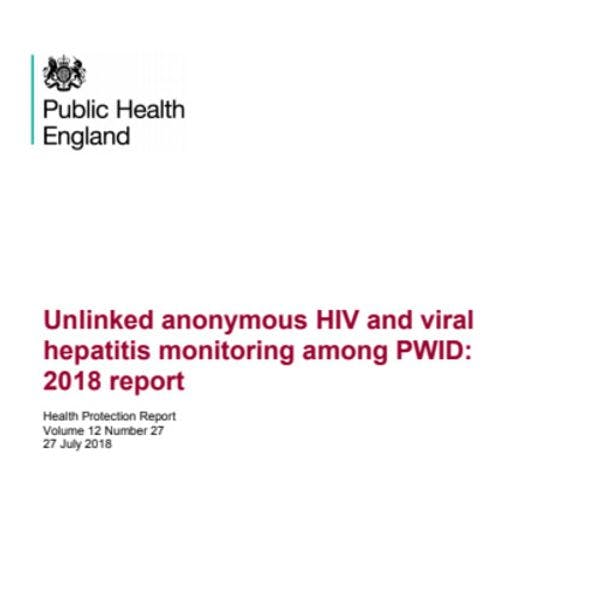Unlinked anonymous HIV and viral hepatitis monitoring among PWID: 2018 report
By Public Health England
New data from the ongoing Unlinked Anonymous Monitoring Survey of HIV and Viral Hepatitis among People Who Inject Drugs (PWID) have been published on the PHE website; the updated sets of tables present data for the period 2007 to 2017 inclusive. Data from 1990 to 2006 inclusive can be found in previous years’ data tables. In addition to data for the whole of England, Wales and Northern Ireland (the areas covered by this survey), the tables include data for each country and the regions of England. This article presents an overview of the trends between 2007 and 2017 for HIV, hepatitis B, hepatitis C and risk behaviours from the main Unlinked Anonymous Monitoring Survey, which is targeted at people who inject psychoactive drugs, such as heroin, crack cocaine and amphetamines. Further data from this survey related to hepatitis C will be reported in the Hepatitis C in the UK: 2018 report, to be published later this year
The HIV prevalence among “recent initiates” to injecting drug use (those who first injected during the preceding three years) is an indicator of recent transmission. The prevalence of HIV among the recent initiates taking part in the survey across England, Wales and Northern Ireland ranged from 0% to 2.6% over the time period between 2007 and 2017.
Symptoms of a possible injection site infection are common among PWID across England, Wales and Northern Ireland. In 2017, 50% (95% CI, 47%-52%) of PWID who had injected during the preceding year reported that they had experienced an abscess, sore or open wound at an injection site – all possible symptoms of an injection site infection - during the preceding year (see table 9 of the dataset). Questions regarding symptoms of injection site infections have been updated and as a result, data collected in 2017 is not comparable to previously collected data. Data from previous years can be found online [1]. The levels of possible injection site infection were particularly high among the over-35 year age group at 51%
Injecting into the groin has been associated with a number of health problems, including damage to the femoral vein and artery, infections and circulatory problems [4-5]. The proportion of current PWID who reported injecting into their groin during the preceding four weeks varied across England, Wales and Northern Ireland
